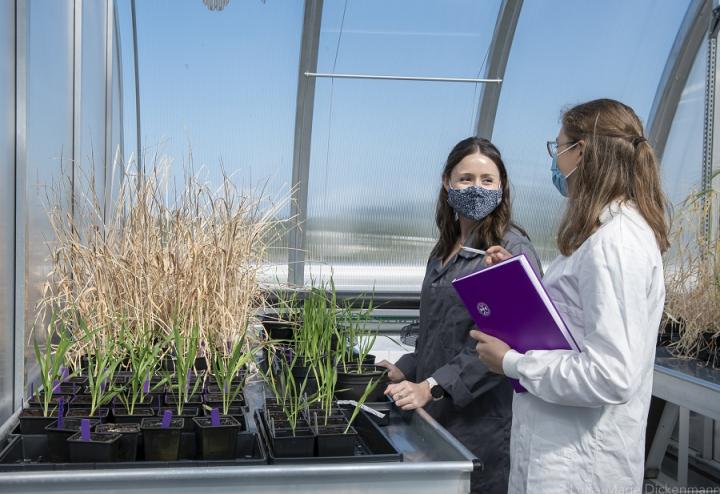Annis Richardson awarded European Research Council Starting Grant
Dr Annis Richardson, Lecturer in Molecular Crop Science, is the recipient of a European grant which funds researchers of any nationality, to run cutting-edge research projects across Europe.

Annis is one of 408 researchers to have won this year’s European Research Council (ERC) Starting Grants. The total funding of the program is worth €636 million and is part of the Horizon Europe programme.
The ERC Starting Grant program helps excellent new scientists, who have 2 to 7 years experience after their PhDs, to launch their own projects, form their teams, and pursue their most promising ideas.
The grants will be invested in scientific projects spanning all disciplines of research from engineering to life sciences to humanities.
The ERC, set up by the European Union in 2007, is the premier European funding organisation for excellent frontier research.
DynaLines Project
Dr Annis Richardson, based at the Institute of Molecular Plant Sciences, has been awarded €1.5 million to study how grass crops, such as maize and barley, grow.
Her project ‘DynaLines - Drawing lines in a dynamic environment: delineating domains from base to tip in plants’ will examine how plant cells specialise and develop into complex tissues as the plant grows.
These complex tissues and structures make up larger structures, like leaves - known as organs - that allow the plant to interact with its environment and are the key to its survival.
Yet little is known about how plant organ shape is defined, whether there is a common underlying mechanism, and how this has been adapted to generate diverse shapes in, for example, flowers and leaves.
Investigating Plant Organ Development
The DynaLines project will reveal a key ‘patterning’ mechanism that defines the shape of plant organs and explore how it has altered over evolution to create different organ shapes across species.
As a plant grows and its organs form, groups of plant cells become specialised to carry out different functions. The shape of organs is due to groups of these cells – known as domains - growing at different rates.
Despite the importance of domain patterning, the components and how they are regulated in a developing plant organ is poorly understood.
The base-to-tip of the grass leaf is an excellent model as it has distinct domains with agriculturally important functions, such as controlling leaf angle which influences the ability of the leaf to capture light.
New Tools

To date studies have been hampered by a lack of tools and inaccessibility of the developing leaves.
To add to this, genetic analysis has been complicated by the presence of different genes that perform the same function.
Molecular technologies, such as single-cell RNAseq and spatial protein analysis, will be combined with recent advances in live imaging, computational modelling and transgenic tools in grasses developed in Annis’ lab.
Using these tools, Annis will reveal the mechanism that underpins domains in the grass leaf, identifying domain components and tracking their regulation in space and time.
Agricultural Impact
The approach will lead to new insights on plant development and evolution, and will uncover a mechanism important for key agricultural traits.
These insights could pave the way for precision engineering of cereal crops to improve yields and resilience – ensuring we continue to feed a rapidly growing population in a changing climate.
I am delighted to have been awarded an ERC Starter Grant to study how grasses like maize and barley grow. This grant is in an incredible opportunity to establish my research group and to drive forward our understanding of the rules that govern how our cereal crops grow. I am very excited to be a part of the ERC community and expand my group here at Edinburgh.
It is a pleasure to see this new group of bright minds at the start of their careers, set to take their research to new heights. I cannot emphasise enough that Europe as a whole - both at national and at EU level - has to continue to back and empower its promising talent. We must encourage young researchers who are led by sheer curiosity to go after their most ambitious scientific ideas. Investing in them and their frontier research is investing in our future.
Related Links

